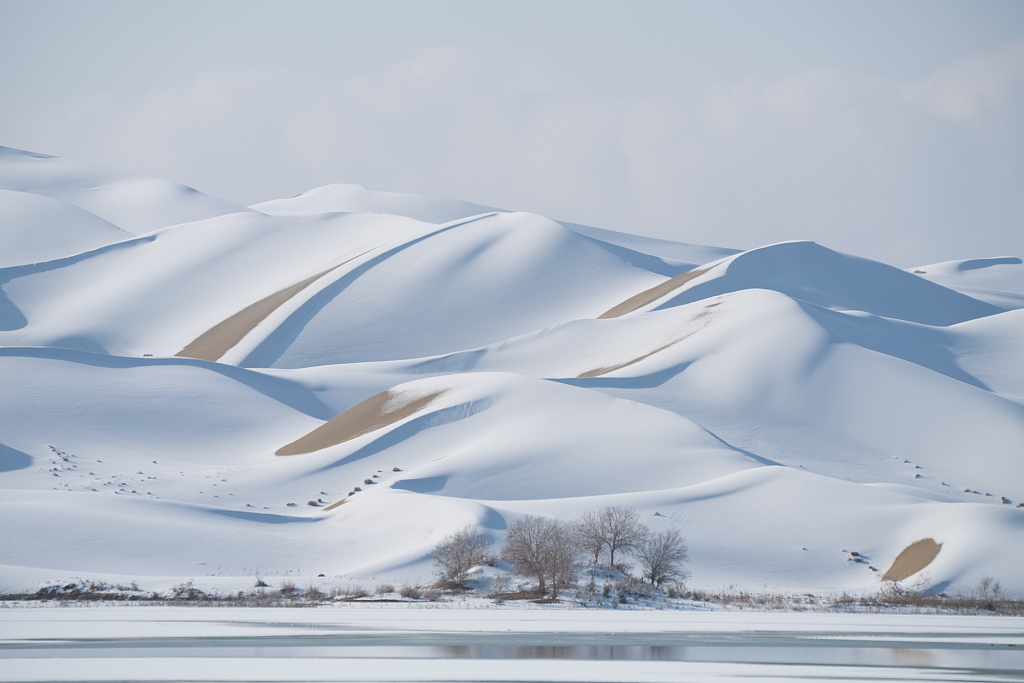/ground-report/media/post_banners/wp-content/uploads/2021/12/Snowfall-in-the-Taklamakan-desert.jpg)
Ground Report | New Delhi: Snowfall in the Taklamakan desert; A rare snowstorm has created stunning panoramic views in the Taklamakan Desert in northwestern China's Xinjiang Uygur Autonomous Region. Due to a recent cold front, snow fell in the desert on November 28, making the rolling desert dunes appear like snow-capped mountains.
The Taklamakan Desert is located in the center of the Tarim Basin in Xinjiang. It is the largest desert in China and the second largest mobile desert in the world. Rain and snow are rare, and snowmelt easily when encountering deserts.
ALSO READ: How much will Twitter pay its new CEO Parag Agrawal?
This year, the northern edge of the Taklamakan Desert has received snow for the second time since 2008.



The image below shows the interaction between snow and sand dunes. In areas with thin snow cover, snow tends to stick to the west-facing slopes, while leaving the east-facing slopes free of snow. (Snowfall in the Taklamakan desert)
The Taklimakan Desert is one of the largest sandy deserts in the world. The flowing waters in the Tarim Basin have no drainage, so sediments have accumulated continuously over the years, and in some parts of the desert, sand dunes are 300 meters (about 1,000 ft) high.
It is far from any ocean, and so hot, dry and cold, in turn, is driven by northerly winds and sandstorms, with sand dunes covering 85% of the surface.
ALSO READ: 60% of British media articles about Muslims are negative: Reports
The average annual rainfall in the Taklamakan Desert is less than 40 mm (1.57 inches), said Wang Yu and Deng Guang Run of the Desert Research Institute in Lanzhou, China.
According to the Terrestrial Ecoregions—the Taklamakan Desert, it is about 10 mm—that is more than a third of an inch in the center and 100 mm at the base of the mountains.
You can connect with Ground Report on Facebook, Twitter, Instagram, and Whatsapp. For suggestions and writeups mail us at [email protected]